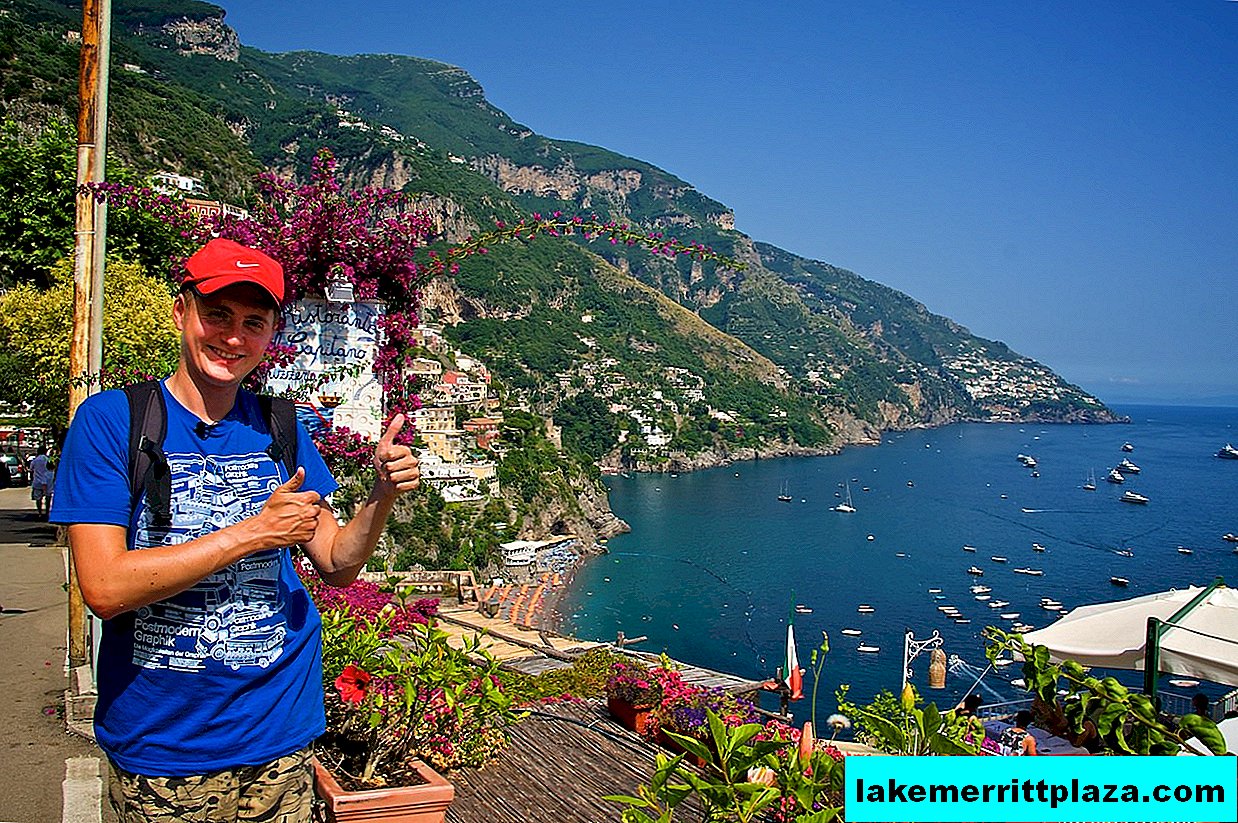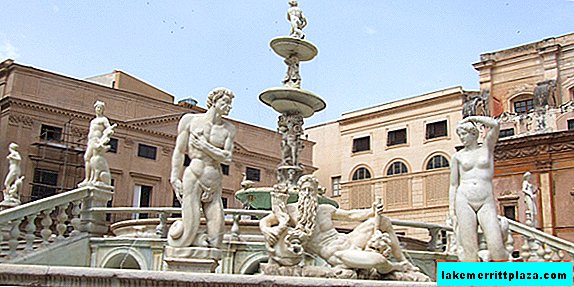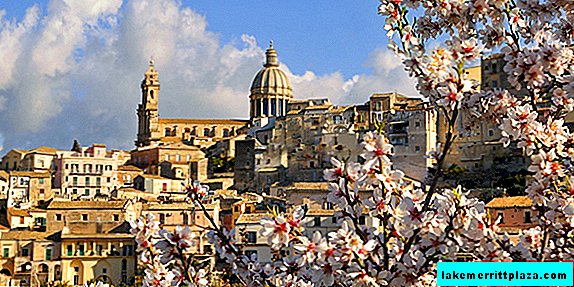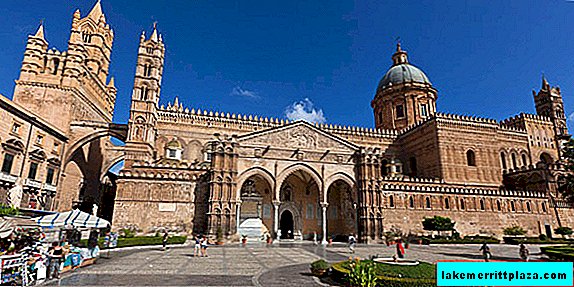Michelangelo’s Pieta is the mournful image of Mary mourning the crucified Christ taken from the cross. The masterpiece is on display at St. Peter's Basilica in the Vatican. Translated from Italian, Pietà - "compassion, sorrow, pity, sympathy." The plot of this iconographic sculpture is not mentioned in the 4 texts of the Gospel, nor is it in the apocrypha. But in Catholicism, the Pieta of the great master is one of the most powerful images for influencing the minds and hearts of believers.

Description
Michelangelo's Pieta is a sculptural composition of a pyramidal shape, carved from a single block of light marble. The master’s hand cut off all that was superfluous, and the world had a stunning image of a grieving mother who had lost her son. The sculpture is located behind the armored glass; it cannot be seen from all sides. But there is something in it that attracts the curious sights of tourists and generates special feelings for those who believe in the atoning sacrifice of Jesus Christ.
Recommend: admire Pieta without queues and crowds of tourists during an individual excursion to the Vatican at dawn.
In the XIV century, in Christianity, the veneration of the sorrows of the Virgin Mary was born, which was reflected in the European art of that time. On the ribs and hands of a lifeless Jesus - traces of wounds after Calvary. It is amazing how the young Michelangelo succeeded in expressing the whole tragedy of what happened in the figure of St. Mary holding the dead Son in her arms.
The whole image of the sculptural composition of Michelangelo Buonarroti conveys the entire depth of the tragedy of Our Lady mourning over the body of Christ.
The right hand holds the body in a position familiar to women - this is how they breastfeed infants. But this is a mature man, and his head falls from his mother’s shoulder. The left hand, as it were, asks - this is a dumb question, expressed in the fingers of the grieving mother's perplexity about the aimless death of the sinless Christ. The cape on the head is seemingly carelessly broken, small folds of fabric reveal the brow and the last look of the Mother of God as much as possible.
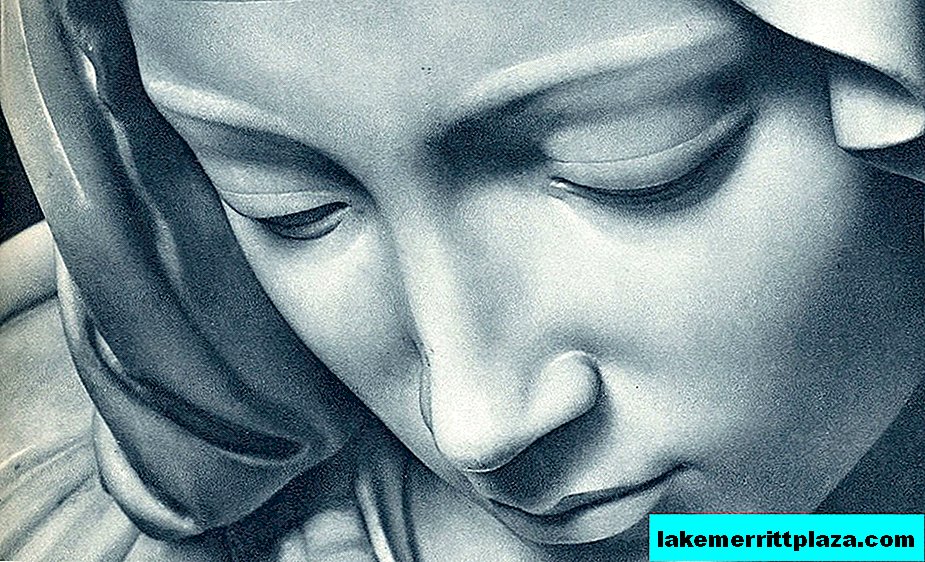
Mary does not stare in amazement at Jesus' face, but at the pierced ribs and hand, trying to capture the smallest details before giving His body for burial. Art historians associate fractures in the coarse fabric with fractures of the soul - from irreparable loss. Her face is not distorted by a grimace of sorrow, it feels like it's all over, the last look at the figure of the Son and understanding of what is happening remains. Perhaps the sculptor wanted to convey her memory of the prophecy of Christ, who promised to resurrect on the 3rd day. Or maybe that’s what humility looks like - dumb indifference because nothing can be fixed?
On the maternal lap is the lifeless body of the 33-year-old Christ. The face does not express the suffering suffered by Him, the head is thrown back, the whole figure is relaxed, but is held by Mary. Hands and feet - with traces of nails after crucifixion. The ribs of Jesus were pierced on the cross after his death, before the Roman soldiers removed him (as the Holy Scripture tells us).
The figures of the characters of the biblical plot are made in full growth. Realism is also expressed in the obvious signs of crucifixion and the mournful and humble face of Mary.
Mother of Christ is depicted as young, without deep age wrinkles, although she was about 50 years old during the crucifixion of the Firstborn. Theological canons were violated, but art historians insist on the idea that it was customary during the Renaissance to portray the purity of the soul and the spirituality of the Immaculate Virgin. Blessed Mary, as you know, conceived Christ from the Holy Spirit, according to prophecies. After the birth of Jesus, he and Joseph had other children conceived naturally. But in Christianity it is customary to talk about her as the Most Pure and Holy Virgin Mary, the Virgin and Mother of our Lord Jesus Christ. That is why all the paintings and sculptures portray her as a young and pretty virgin.
The work was lengthy and painstaking, few believed that an unknown 24-year-old artist and novice sculptor would cope with such a task. But the result exceeded all expectations - no one could surpass this masterpiece of Michelangelo, both in aesthetics and in the strength of emotional embodiment.
Michelangelo Buonarroti was asked the question: "How do you manage to - not make a single mistake, because it is a stone, not clay?" The master replied: "Nothing complicated, I keep in my mind a perfect image and cut off everything unnecessary from a block of marble!"
The destruction of a masterpiece and its restoration
One of the most famous statues has been damaged several times - during the transportation and attack of a crazy vandal. In 1972, the statue was damaged by a hammer obsessed Hungarian Laszlo Tot (a geologist who worked in Australia), who imagines himself to be one of the incarnations of Christ. He beat off about 50 pieces of marble with a rock hammer until he was seized by the guards and handed over to the police.
The face of the Virgin suffered from the act of vandalism, part of the nose and bedspread, as well as the hand of Christ, were repulsed. Some of the pieces were lost, but many were immediately returned to the temple attendants by tourists and eyewitnesses. After restoration, it regained its original appearance, although the lost fragments were carved from unimportant sections of the sculpture in the background.

Spectral analysis showed that a couple of centuries ago, part of Mary's left arm (to the elbow) was repulsed, but perfectly restored. During one of the recent transportations, 4 fingers of the left hand were repelled, but restoration work corrected this defect.
Since then, the sculpture of Pieta has been reliably protected from unbalanced visitors by tempered glass. And the madman was captured and handed over to the authorities. Italian restorers have done everything possible to make Pieta Michelangelo Buonarroti, exhibited in St. Peter's Basilica (Vatican) look like new. The composition is highlighted on a raised platform so that even behind the acrylic glass it is perfectly visible to pilgrims and many tourists of the main Vatican temple.
History of Pietà
Interest in the biblical story of the time between the crucifixion of Jesus and his miraculous resurrection has long worried the minds of Christians of different faiths. Since the days of Gothic sculpture and the art of the Early Renaissance, Italian masters in other neighboring European countries sang the mournful image of Mary, who had lost the Firstborn. Surely the paintings of Perugino's “Mourning of Christ” (1493-94), now in the Uffizi Gallery in Florence) and “Pieta” by Botticelli (1495) prompted many followers to reflect this tragic scene in stone and on canvas.

Nobody believed in the success of Michelangelo, but he not only did an excellent job, but also surpassed his talented teachers. His Pieta not only glorified him throughout Rome, soon Italy and France started talking about his work, where the work was supposed to go.
But in religious and bohemian circles, not everyone could accept that an unknown, but capable young man is able to make a significant contribution to art and surpass the masterpieces of Antiquity and Ancient Rome. He partially violated the canons, in some way used the successful finds of his predecessors, but abandoned the secondary figures of “eyewitnesses”.
The play was created for Cardinal Jean Bilaire de Lagrol, who served as the French ambassador to the court of Pope Alexander VI Borgia during the time of Charles VIII. The marble composition was intended for the chapel of St. Petronilla, which belonged to the French community. It is unlikely that a young sculptor could receive a serious order, but an influential patrician, the Roman banker Jacopo Galli, the patron of the talent of Michelangelo, vouched for it.
I had to make every effort to justify the highest trust and work out a generous fee of 450 gold ducats.
The contract was signed on May 26, 1498, and the sculptor went to the quarry for a block of marble to Carrara with auxiliary workers who undertook to deliver the material to the place of work. Galli vouched for the customer that in a year Pieta Michelangelo would appear to be a skeptic and envious. It took longer to work, but the bet was won that the mournful sculpture would become the most beautiful marble creation of Rome.

The recognition of the masterpiece is confirmed by multiple copies around the world. Some handicraft workshops carry out crude fakes for wealthy customers who want to see Pieta in their garden, at the fountain or among sculptural copies of world masterpieces.
Michelangelo's only signed work
"Mourning of Christ" is one of the great works of the great Michelangelo. Having completed it, the sculptor left for Florence, but eyewitnesses testified that at every opportunity he visited his greatest creation in Rome. No one knew if his aesthetics drew his own masterpiece or the depth of the image with a delightful contrast of a living and dead body ...
Michelangelo, according to his contemporaries, lived like an ascetic, was laconic, never entered into disputes, did not defend his authorship, which was often called into question. It was probably difficult for an outside observer to recognize the genius of the young sculptor. And mediocre envious people could not agree with the fact that with his hands a stone was carved inimitable inimitable masterpiece, recognized as a standard.
This unsigned creation gave rise to a curious case - Michelangelo did not leave signatures on his creations. And an autograph was left on Drink, and even with an error!
While visiting his statue, Michelangelo, portraying an outsider, watched how observers react to his work of art. And then he overheard a lively argument between two onlookers who denied the authorship of Buonarroti. One of them defended the version that only the Milan sculptor Gobbo could carve it in stone. The great master did not argue with uninformed compatriots, having decided to perpetuate the authenticity of his masterpiece by signing Maria’s autograph. This was told to the world by Giorgio Vasari (Giorgio Vasari), poet and biographer of several Italian artists.
The intention was so firm that Michelangelo decided to stay at the basilica where his sculptural composition stood for the night and knock out his name on marble. However, the "poor artist" was semi-literate, so he made a mistake in writing his name. So far, no one has fixed it:
"MIKILANGELO BUONARROTI FLORENTIAN EXECUTED"
No one dared to correct the wrong 4th letter, violating the integrity of the autograph, although marble is a soft stone. The block of the purest breed with almost no inclusions and cracks, the sculptor personally chose, going to the Karara quarries. His efforts and efforts were justified - a magnificent flesh-colored statue exceeded all expectations.
Although the customer did not live to see the completion of the masterpiece, rumors of excellent creation quickly spread throughout Rome. Soon all of Italy talked about Michelangelo Buonarroti's Pieta, and many were in a hurry to see it. The ingenious model was awarded the most honorable place in the Vatican - St. Peter's Basilica. And the young sculptors were obliged by the teachers to examine her as a role model.
Another autograph of the great master has survived, although most of the sketches and works were destroyed by him personally, as "far from perfect." At Sotheby's auction, 30 historical documents signed by celebrities, including Michelangelo's signature from 1521, a contract for paying for the work of 2 sculptors, went under the hammer. They helped Buonarroti work on the statue of Christ in the church of Santa Maria sopra Minerva in Rome. But that masterpiece was left without a signature.

You can see the statue of Christ during an individual tour of Rome at dawn.
Interesting Facts
- The plot of the grieving Mary over the body of Jesus Christ removed from the cross is not new; her wounds were reflected in the canvases and sculptures of the masters of the Early Renaissance. The force of the tragedy of these works, most likely, prompted the work of Michelangelo Buonarroti, who decided to do everything a little differently.
- The difficult task is to combine 2 figures in full growth into a common sculptural composition, without violating the proportions, but the master brilliantly managed. It is worth recalling that this is marble, and a multi-ton lump after work should have maintained balance.
- Naturalism is expressed in the growth of the figures of Pieta. Experts estimate that the growth of Christ (if He rose) would be about 175cm, Mary - a little more. But this is natural for the composition of the grieving Mother with the Son in her arms.
- The figures of the celebrated composition were carved from marble for a cardinal from France. Such a masterpiece could not be left unknown. It was declared the "national treasure" of Italians and a "role model", so it was transferred to the Vatican in the XVIII century.
- The dimensions of the multi-ton sculpture are 174 × 195 × 69cm. The base for the drink was made in 1626 by Francesco Borromini. This is the only work of Michelangelo, where his signature is (on the lane of the Mother of God), because even before completion there were disputes about authorship and its authenticity.
Where is it, how to see the work of the great master
Michelangelo’s Pieta is on display for bulletproof glass in the main religious building of the Vatican - St. Peter's Basilica
Access is free, right at the entrance to the right in the first chapel. But it is located at some distance from those present, it is visible only from the front view.
The cathedral is open daily - from 7:00 to 18:30. There is always a lot of people here, and to take a closer look at the masterpiece, many prudent tourists rush to the opening, and the most curious visit the author’s tour THE WHOLE VATICAN FOR 6 HOURS.





